1.
Introduction and preliminaries
In 1922, S. Banach [15] provided the concept of Contraction theorem in the context of metric space. After, Nadler [28] introduced the concept of set-valued mapping in the module of Hausdroff metric space which is one of the potential generalizations of a Contraction theorem. Let (X,d) is a complete metric space and a mapping T:X→CB(X) satisfying
for all x,y∈X, where 0≤γ<1, H is a Hausdorff with respect to metric d and CB(X)={S⊆X:S is closed and bounded subset of X equipped with a metric d}. Then T has a fixed point in X.
In the recent past, Matthews [26] initiate the concept of partial metric spaces which is the classical extension of a metric space. After that, many researchers generalized some related results in the frame of partial metric spaces. Recently, Asadi et al. [4] introduced the notion of an M-metric space which is the one of interesting generalizations of a partial metric space. Later on, Samet et al. [33] introduced the class of mappings which known as (α,ψ)-contractive mapping. The notion of (α,ψ) -contractive mapping has been generalized in metric spaces (see more [10,12,14,17,19,25,29,30,32]).
Throughout this manuscript, we denote the set of all positive integers by N and the set of real numbers by R. Let us recall some basic concept of an M-metric space as follows:
Definition 1.1. [4] Let m:X×X→R+be a mapping on nonempty set X is said to be an M-metric if for any x,y,z in X, the following conditions hold:
(i) m(x,x)=m(y,y)=m(x,y) if and only if x=y;
(ii) mxy≤m(x,y);
(iii) m(x,y)=m(y,x);
(iv) m(x,y)−mxy≤(m(x,z)−mxz)+(m(z,y)−mz,y) for all x,y,z∈X. Then a pair (X,m) is called M-metric space. Where
and
Remark 1.2. [4] For any x,y,z in M-metric space X, we have
(i) 0≤Mxy+mxy=m(x,x)+m(y,y);
(ii) 0≤Mxy−mxy=|m(x,x)−m(y,y)|;
(iii) Mxy−mxy≤(Mxz−mxz)+(Mzy−mzy).
Example 1.3. [4] Let (X,m) be an M-metric space. Define mw, ms:X×X→R+ by:
(i)
(ii)
Then mw and ms are ordinary metrics. Note that, every metric is a partial metric and every partial metric is an M-metric. However, the converse does not hold in general. Clearly every M-metric on X generates a T0 topology τm on X whose base is the family of open M -balls
where
for all x∈X, ε>0. (see more [3,4,23]).
Definition 1.4. [4] Let (X,m) be an M-metric space. Then,
(i) A sequence {xn} in (X,m) is said to be converges to a point x in X with respect to τm if and only if
(ii) Furthermore, {xn} is said to be an M-Cauchy sequence in (X,m) if and only if
exist (and are finite).
(iii) An M-metric space (X,m) is said to be complete if every M-Cauchy sequence {xn} in (X,m) converges with respect to τm to a point x∈X such that
Lemma 1.5. [4] Let (X,m) be an M-metric space. Then:
(i) {xn} is an M-Cauchy sequence in (X,m) if and only if {xn} is a Cauchy sequence in a metric space (X,mw).
(ii) An M-metric space (X,m) is complete if and only if the metric space (X,mw) is complete. Moreover,
Lemma 1.6. [4] Suppose that {xn} convergesto x and {yn} converges to y as n approaches to ∞ in M-metric space (X,m). Then we have
Lemma 1.7. [4] Suppose that {xn} converges to xas n approaches to ∞ in M-metric space (X,m).Then we have
Lemma 1.8. [4] Suppose that {xn} converges to xand {xn} converges to y as n approaches to ∞ in M-metric space (X,m). Then m(x,y)=mxymoreover if m(x,x)= m(y,y), then x=y.
Definition 1.9. Let α:X×X→[0,∞). A mapping T:X→X is said to be an α-admissible mapping if for all x,y∈X
Let Ψ be the family of the (c)-comparison functions ψ:R+∪{0}→R+∪{0} which satisfy the following properties:
(i) ψ is nondecreasing,
(ii) ∑∞n=0ψn(t)<∞ for all t>0, where ψn is the n-iterate of ψ (see [7,8,10,11]).
Definition 1.10. [33] Let (X,d) be a metric space and α:X×X→[0,∞). A mapping T:X→X is called (α,ψ)-contractive mapping if for all x,y∈X, we have
where ψ∈Ψ.
A subset K of an M-metric space X is called bounded if for all x∈K, there exist y∈X and r>0 such that x∈Bm(y,r). Let ¯K denote the closure of K. The set K is closed in X if and only if ¯K=K.
Definition 1.11. [31] Define Hm:CBm(X)×CBm(X)→[0,∞) by
where
Lemma 1.12. [31] Let F be any nonempty set in M-metric space (X,m), then
Proposition 1.13. [31] Let A,B,C∈CBm(X), then
(i) ∇m(A,A)=supx∈A{supy∈Amxy},
(ii) (∇m(A,B)−supx∈Asupy∈Bmxy)≤(∇m(A,C)−infx∈Ainfz∈Cmxz)+
(∇m(C,B)−infz∈Cinfy∈Bmzy).
Proposition 1.14. [31] Let A,B,C∈CBm(X) followingare hold
(i) Hm(A,A)=∇m(A,A)=supx∈A{supy∈Amxy},
(ii) Hm(A,B)=Hm(B,A),
(iii) Hm(A,B)−supx∈Asupy∈Amxy)≤Hm(A,C)+Hm(B,C)−infx∈Ainfz∈Cmxz−infz∈Cinfy∈Bmzy.
Lemma 1.15. [31] Let A,B∈CBm(X) and h>1.Then for each x∈A, there exist at the least one y∈B such that
Lemma 1.16. [31] Let A,B∈CBm(X) and l>0.Then for each x∈A, there exist at least one y∈B such that
Theorem 1.17. [31] Let (X,m) be a complete M-metric space and T:X→CBm(X). Assume that there exist h∈(0,1) such that
for all x,y∈X. Then T has a fixed point.
Proposition 1.18. [31] Let T:X→CBm(X) be a set-valued mapping satisfying (1.1) for all x,y inan M-metric space X. If z∈T(z) for some z in Xsuch that m(x,x)=0 for x∈T(z).
2.
Main results
We start with the following definition:
Definition 2.1. Assume that Ψ is a family of non-decreasing functions ϕM:R+→R+ such that
(i) ∑+∞nϕnM(x)<∞ for every x>0 where ϕnM is a nth-iterate of ϕM,
(ii) ϕM(x+y)≤ϕM(x)+ϕM(y) for all x,y∈R+,
(iii) ϕM(x)<x, for each x>0.
Remark 2.2. If ∑αn|n=∞ =0 is a convergent series with positive terms then there exists a monotonic sequence (βn)|n=∞ such that βn|n=∞=∞ and ∑αnβn|n=∞=0 converges.
Definition 2.3. Let (X,m) be an M-metric pace. A self mapping T:X→X is called (α∗,ϕM)-contraction if there exist two functions α∗:X×X→[0,∞) and ϕM∈Ψ such that
for all x,y∈X.
Definition 2.4. Let (X,m) be an M-metric space. A set-valued mapping T:X→CBm(X) is said to be (α∗,ϕM)-contraction if for all x,y∈X, we have
where ϕM∈Ψ and α∗:X×X→[0,∞).
A mapping T is called α∗-admissible if
for each a1∈T(x) and b1∈T(y).
Theorem 2.5. Let (X,m) be a complete M-metric space.Suppose that (α∗,ϕM) contraction and α∗-admissible mapping T:X→CBm(X)satisfies the following conditions:
(i) there exist x0∈X such that α∗(x0,a1)≥1 for each a1∈T(x0),
(ii) if {xn}∈X is a sequence such that α∗(xn,xn+1)≥1 for all n and {xn}→x∈X as n→∞, then α∗(xn,x)≥1 for all n∈N. Then T has a fixed point.
Proof. Let x1∈T(x0) then by the hypothesis (i) α∗(x0,x1)≥1. From Lemma 1.16, there exist x2∈T(x1) such that
Similarly, there exist x3∈T(x2) such that
Following the similar arguments, we obtain a sequence {xn}∈X such that there exist xn+1∈T(xn) satisfying the following inequality
Since T is α∗-admissible, therefore α∗(x0,x1)≥1⇒α∗(x1,x2)≥1. Using mathematical induction, we get
By (2.1) and (2.2), we have
Let us assume that ϵ>0, then there exist n0∈N such that
By the Remarks (1.2) and (2.2), we get
Using the above inequality and (m2), we deduce that
Owing to limit, we have limn→∞m(xn,xn)=0,
Now, we prove that {xn} is M-Cauchy in X. For m,n in N with m>n and using the triangle inequality of an M-metric we get
m(xn,xm)−mxnxm→0, as n→∞, we obtain limm,n→∞(Mxnxm−mxnxm)=0. Thus {xn} is a M-Cauchy sequence in X. Since (X,m) is M-complete, there exist x⋆∈X such that
Also, limn→∞m(xn,xn)=0 gives that
which implies that m(x⋆,x⋆)=0 and hence we obtain mx⋆T(x⋆)=0. By using (2.1) and (2.3) with
Thus,
Now from (2.3), (2.4), and xn+1∈T(xn), we have
Taking limit as n→∞ and using (2.4), we obtain that
Since mxn+1T(x⋆)≤m(xn+1,T(x⋆)) which gives
Using the condition (m4), we obtain
Applying limit as n→∞ and using (2.3) and (2.6), we have
From (m2), mx⋆y≤m(x⋆y) for each y∈T(x⋆) which implies that
Hence,
Then
Thus
Now, from (2.7) and (2.8), we obtain
Consequently, owing to Lemma (1.12), we have x⋆∈¯T(x⋆)=T(x⋆).
Corollary 2.6. Let (X,m) be a complete M-metric space and anself mapping T:X→X an α∗-admissible and (α∗,ϕM)-contraction mapping. Assume that thefollowing properties hold:
(i) there exists x0∈X such that α∗(x0,T(x0))≥1,
(ii) either T is continuous or for any sequence {xn}∈X with α∗(xn,xn+1)≥1 for all n∈N and {xn}→x as n → ∞, we have α∗(xn,x)≥1 for all n∈N. Then T has a fixed point.
Some fixed point results in ordered M-metric space.
Definition 2.7. Let (X,⪯) be a partially ordered set. A sequence {xn}⊂X is said to be non-decreasing if xn⪯xn+1 for all n.
Definition 2.8. [16] Let F and G be two nonempty subsets of partially ordered set (X,⪯). The relation between F and G is defined as follows: F≺1G if for every x∈F, there exists y∈G such that x⪯y.
Definition 2.9. Let (X,m,⪯) be a partially ordered set on M-metric. A set-valued mapping T:X→CBm(X) is said to be ordered (α∗,ϕM)-contraction if for all x,y∈X, with x⪯y we have
where ϕM∈Ψ. Suppose that α∗:X×X→[0,∞) is defined by
A mapping T is called α∗-admissible if
for each a1∈T(x) and b1∈T(y).
Theorem 2.10. Let (X,m,⪯) be a partially orderedcomplete M-metric space and T:X→CBm(X) an α∗-admissible ordered (α∗,ϕM)-contraction mapping satisfying the following conditions:
(i) there exist x0∈X such that {x0}≺1{T(x0)}, α∗(x0,a1)≥1 for each a1∈T(x0),
(ii) for every x,y∈X, x⪯y implies T(x)≺1T(y),
(iii) If {xn}∈X is a non-decreasing sequence such that xn⪯xn+1 for all n and {xn}→x∈X as n →∞ gives xn⪯x for all n∈N. Then T has a fixed point.
Proof. By assumption (i) there exist x1∈T(x0) such that x0⪯x1 and α∗(x0,x1)≥1. By hypothesis (ii), T(x0)≺1T(x1). Let us assume that there exist x2∈T(x1) such that x1⪯x2 and we have the following
In the same way, there exist x3∈T(x2) such that x2⪯x3 and
Following the similar arguments, we have a sequence {xn}∈X and xn+1∈T(xn) for all n≥0 satisfying x0⪯x1⪯x2⪯x3⪯...xn⪯xn+1. The proof is complete follows the arguments given in Theorem 2.5.
Example 2.11. Let X=[16,1] be endowed with an M -metric given by m(x,y)=x+y2. Define T:X→CBm(X) by
Define a mapping α∗:X×X→[0,∞) by
Let ϕM:R+→R+ be given by ϕM(t)=1710 where ϕM∈Ψ, for x,y∈X. If x=16, y=14 then m(x,y)=524, and
If x=13, y=12 then m(x,y)=512, and
If x=16, y=1, then m(x,y)=712 and
In all cases, T is (α∗,ϕM)-contraction mapping. If x0=13, then T(x0)={x2,x3}.Therefore α∗(x0,a1)≥1 for every a1∈T(x0). Let x,y∈X be such that α∗(x,y)≥1, then x,y∈[x2,x3] and T(x)={x2,x3} and T(y)= {x2,x3} which implies that α∗(a1,b1)≥1 for every a1∈T(x) and b1∈T(x). Hence T is α∗-admissble.
Let {xn}∈X be a sequence such that α∗(xn,xn+1)≥1 for all n in N and xn converges to x as n converges to ∞, then xn∈[x2,x3]. By definition of α∗ -admissblity, therefore x∈[x2,x3] and hence α∗(xn,x)≥1. Thus all the conditions of Theorem 2.3 are satisfied. Moreover, T has a fixed point.
Example 2.12. Let X={(0,0),(0,−15),(−18,0)} be the subset of R2 with order ⪯ defined as: For (x1,y1),(x2,y2)∈X, (x1,y1)⪯(x2,y2) if and only if x1≤x2, y1≤y2. Let m:X×X→R+ be defined by
Then (X,m) is a complete M-metric space. Let T:X→CBm(X) be defined by
Define a mapping α∗:X×X→[0,∞) by
Let ϕM:R+→R+ be given by ϕM(t)=12. Obviously, ϕM∈Ψ. For x,y∈X,
if x=(0,−15) and y=(0,0), then Hm(T(x),T(y))=0 and m(x,y)=110 gives that
If x=(−18,0) and y=(0,0) then Hm(T(x),T(y))=0, and m(x,y)=116 implies that
If x=(0,0) and y=(0,0) then Hm(T(x),T(y))=0, and m(x,y)=0 gives
If x=(0,−15) and y=(0,−15) then Hm(T(x),T(y))=0, and m(x,y)=15 implies that
If x=(0,−18) and y=(0,−18) then Hm(T(x),T(y))=0, and m(x,y)=18 gives that
Thus all the condition of Theorem 2.10 satisfied. Moreover, (0,0) is the fixed point of T.
3.
Application
In this section, we present an application of our result in homotopy theory. We use the fixed point theorem proved for set-valued (α∗,ϕM)-contraction mapping in the previous section, to establish the result in homotopy theory. For further study in this direction, we refer to [6,35].
Theorem 3.1. Suppose that (X,m) is a complete M-metricspace and A and B are closed and open subsets of X respectively, suchthat A⊂B. For a,b∈R, let T:B×[a,b]→CBm(X) be aset-valued mapping satisfying the following conditions:
(i) x∉T(y,t) for each y∈B/Aand t∈[a,b],
(ii) there exist ϕM∈Ψ and α∗:X×X→[0,∞) such that
for each pair (x,y)∈B×B and t∈[a,b],
(iii) there exist a continuous function Ω:[a,b]→R such that for each s,t∈[a,b] and x∈B, we get
(iv) if x⋆∈T(x⋆,t),then T(x⋆,t)={x⋆},
(v) there exist x0 in X such that x0∈T(x0,t),
(vi) a function ℜ:[0,∞)→[0,∞) defined by ℜ(x)=x−ϕM(x) is strictly increasing and continuous if T(.,t⊺) has a fixed point in B for some t⊺∈[a,b], then T(.,t) has afixed point in A for all t∈[a,b]. Moreover, for a fixed t∈[a,b], fixed point is unique provided that ϕM(t)=12t where t>0.
Proof. Define a mapping α∗:X×X→[0,∞) by
We show that T is α∗-admissible. Note that α∗(x,y)≥1 implies that x∈T(x,t) and y∈T(y,t) for all t∈[a,b]. By hypothesis (iv), T(x,t)={x} and T(y,t)={y}. It follows that T is α∗ -admissible. By hypothesis (v), there exist x0∈X such that x0∈(x0,t) for all t, that is α∗(x0,x0)≥1. Suppose that α∗(xn,xn+1)≥1 for all n and xn converges to q as n approaches to ∞ and xn∈T(xn,t) and xn+1∈T(xn+1,t) for all n and t∈[a,b] which implies that q∈T(q,t) and thus α∗(xn,q)≥1. Set
So T(.,t⊺) has a fixed point in B for some t⊺∈[a,b], there exist x∈B such that x∈T(x,t). By hypothesis (i) x∈T(x,t) for t∈[a,b] and x∈A so D≠ϕ. Now we now prove that D is open and close in [a,b]. Let t0∈D and x0∈A with x0∈T(x0,t0). Since A is open subset of X, ¯Bm(x0,r)⊆A for some r>0. For ϵ=r+mxx0−ϕ(r+mxx0) and a continuous function Ω on [a,b], there exist δ>0 such that
If t∈(t0−δ,t0+δ) for x∈Bm(x0,r)={x∈X:m(x0,x)≤mx0x+r} and l∈T(x,t), we obtain
Using the condition (iii) of Proposition 1.13 and Proposition 1.18, we have
as x∈T(x0,t0) and x∈Bm(x0,r)⊆A⊆B, t0∈[a,b] with α∗(x0,x0)≥1. By hypothesis (ii), (iii) and (2.9)
Hence l∈¯Bm(x0,r) and thus for each fixed t∈(t0−δ,t0+δ), we obtain T(x,t)⊂¯Bm(x0,r) therefore T:¯Bm(x0,r)→CBm(¯Bm(x0,r)) satisfies all the assumption of Theorem (3.1) and T(.,t) has a fixed point ¯Bm(x0,r)=Bm(x0,r)⊂B. But by assumption of (i) this fixed point belongs to A. So (t0−δ,t0+δ)⊆D, thus D is open in [a,b]. Next we prove that D is closed. Let a sequence {tn}∈D with tn converges to t0∈[a,b] as n approaches to ∞. We will prove that t0 is in D.
Using the definition of D, there exist {tn} in A such that xn∈T(xn,tn) for all n. Using Assumption (iii)–(v), and the condition (iii) of Proposition 1.13, and an outcome of the Proposition 1.18, we have
So, continuity of 1ℜ, ℜ and convergence of {tn}, taking the limit as m,n→∞ in the last inequality, we obtain that
Sine mxnxm≤m(xn,xm), therefore
Thus, we have limn→∞m(xn,xn)=0=limm→∞m(xm,xm). Also,
Hence {xn} is an M-Cauchy sequence. Using Definition 1.4, there exist x∗ in X such that
As limn→∞m(xn,xn)=0, therefore
Thus, we have m(x,x∗)=0. We now show that x∗∈T(x∗,t∗). Note that
Applying the limit n→∞ in the above inequality, we have
Hence
Since m(x∗,x∗)=0, we obtain
From above two inequalities, we get
Thus using Lemma 1.12 we get x∗∈T(x∗,t∗). Hence x∗∈A. Thus x∗∈D and D is closed in [a,b], D=[a,b] and D is open and close in [a,b]. Thus T(.,t) has a fixed point in A for all t∈[a,b]. For uniqueness, t∈[a,b] is arbitrary fixed point, then there exist x∈A such that x∈T(x,t). Assume that y is an other point of T(x,t), then by applying condition 4, we obtain
ForϕM(t)=12t, where t>0, the uniqueness follows.
4.
Application to integral equation
In this section we will apply the previous theoretical results to show the existence of solution for some integral equation. For related results (see [13,20]). We see for non-negative solution of (3.1) in X=C([0,δ],R). Let X=C([0,δ],R) be a set of continuous real valued functions defined on [0,δ] which is endowed with a complete M-metric given by
Consider an integral equation
Define g:X→X by
where
(i) for δ>0, (a) J:[0,δ]×R→R, (b) h:[0,δ]×[0,δ]→[0,∞), (c) ρ:[0,δ]→R are all continuous functions
(ii) Assume that σ:X×X→R is a function with the following properties,
(iii) σ(x,y)≥0 implies that σ(T(x),T(y))≥0,
(iv) there exist x0∈X such that σ(x0,T(x0))≥0,
(v) if {xn}∈X is a sequence such that σ(xn,xn+1)≥0 for all n∈N and xn→x as n→∞, then σ(x,T(x))≥0
(vi)
where t∈[0,δ], s∈R,
(vii) there exist ϕM∈Ψ, σ(y,T(y))≥1 and σ(x,T(x))≥1 such that for each t∈[0,δ], we have
Theorem 4.1. Under the assumptions (i)−(vii) theintegral Eq (3.1) has a solution in {X=C([0,δ],R) for all t∈[0,δ]}.
Proof. Using the condition (vii), we obtain that
Define α∗:X×X→[0,+∞) by
which implies that
Hence all the assumption of the Corollary 2.6 are satisfied, the mapping g has a fixed point in X=C([0,δ],R) which is the solution of integral Eq (3.1).
5.
Conclusions
In this study we develop some set-valued fixed point results based on (α∗,ϕM)-contraction mappings in the context of M-metric space and ordered M-metric space. Also, we give examples and applications to the existence of solution of functional equations and homotopy theory.
Conflict of interest
The authors declare that they have no competing interests.











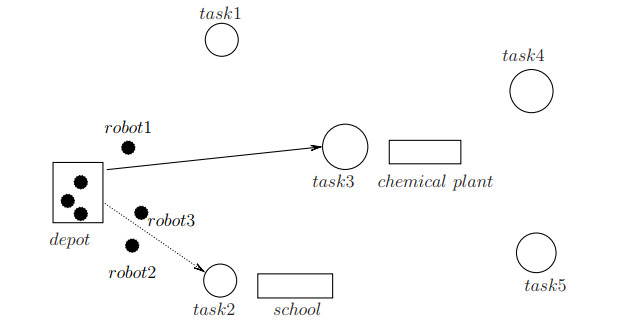
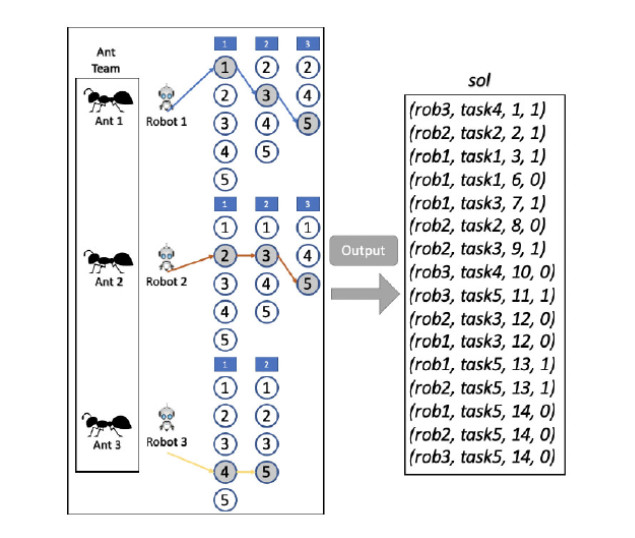
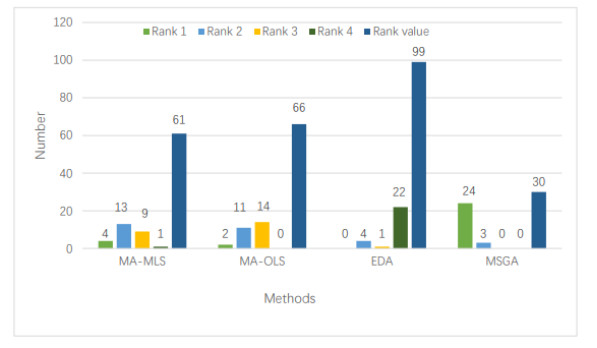

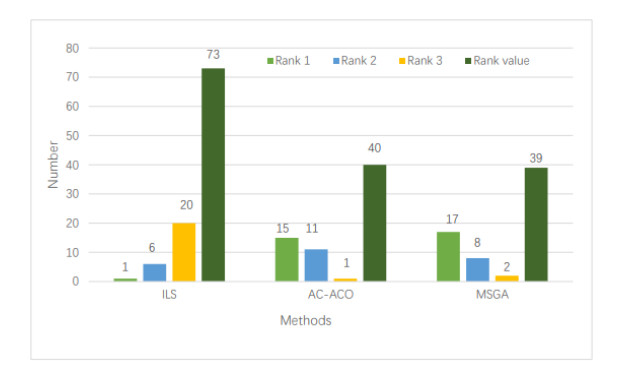
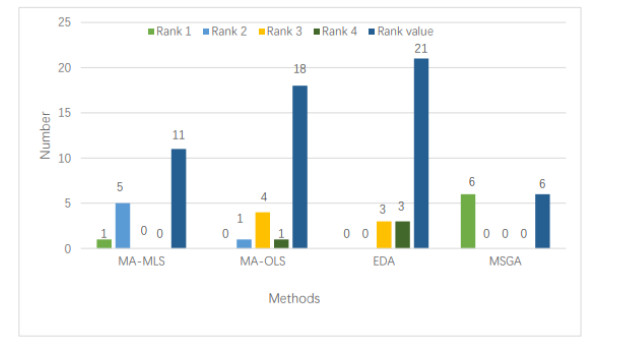
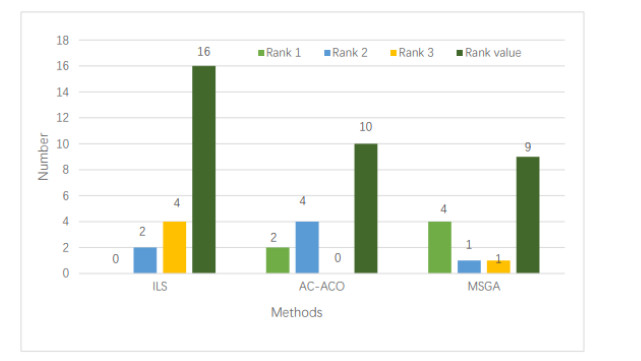
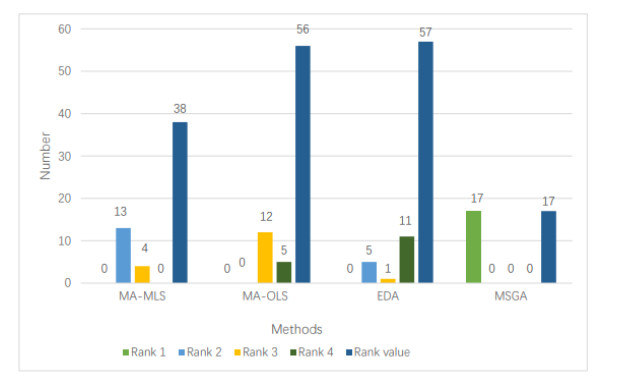

 DownLoad:
DownLoad: